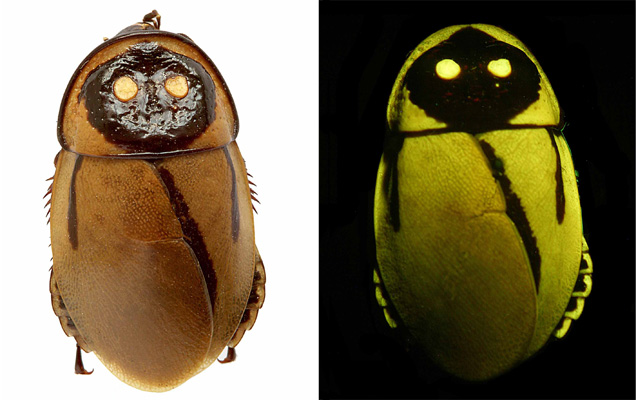6+1 interesting facts about cockroaches
Cockroaches might be the most misunderstood and despised creatures to ever walk the Earth. But if we take a closer look, it turns out there are so many cool things about them. Let me share a few fun cockroach facts, so you can see for yourself!
 |
| Giant burrowing cockroach |
1. Some cockroach mothers care. A lot.
 |
| Madagascar hissing cockroaches grouped together |
2. Fighting for a female
Finding a suitable mate is never easy, but some cockroach males even need to fight for their chosen one. Madagascar hissing cockroach (Gromphadorhina portentosa) males fight with one another: the two males push each other using their horns just like rams, while making loud hissing noises. The winner gets to climb up the hierarchy of the group and get the lady of course.
3. "Dancing" for a female
Death's head cockroach (Blaberus craniifer) males has no need to resort to agression, instead, they dance to impress a female. The male shakes and vibrates his body while constantly pushing the female, then opens his wings and tries to invite the female to mate with him. But he doesn't leave anything to chance: while opening his wings he excretes a tasty body fluid hoping the food offering would engage the females attention and distracts her while the male mates with her.
4. Parfume-scented cockroaches
Cockroaches excrete pheromones to communicate with each other: to attract the opposite sex, to signal a food source or just simply mark a suitable resting place. Unfortunately, to us some of these smells can be quite repulsive. But not all cockroach pheromones are created equal: the giant yellow margined cockroach (Eurycotis opaca) actually smells like fruit, with a hint of alcohol. Their odour is quite strong, but in a small amount it is actually quite pleasant. Just like parfume.
| Giant yellow margined cockroach |
5. They can clean up our food waste
There are specialist, truly gourmet roaches when it comes to food: brown hooded cockroaches (Cryptocercus punctulatus) for example only feed on rotting wood similarly to their close relatives, the termites. But many cockroach species are true generalists - they can eat literary anything.
In some parts of China people recognised this important characteristic and decided to use it to their advantage: desposing of food waste became a big problem and cockroaches became the solution. In huge waste-disposal facilities millions of roaches are fed people's leftovers. The roaches eat the food, than the roaches - as a brilliant protein source - are turned into feed for farm animals. In the end nothing goes to waste.
6. We can actually eat them
If the thought of pigs eating roach-feed creeps you out, you might be surprised to learn, that just as many other insects, some cockroaches are suitable for human consumption. Some say they are tasty if prepared correctly. But based on their nutrient content they might actually be healthy and could even become an alternative to mammal-meat in the future. Who knows.
+1 Some cockroaches might glow
Lastly, here is a bonus, which is not exactly a fact, but more like an anecdote: a species of glowspot roach (Lucihormetica fenestrata) was seen glowing by a scientist once in 1999. A similar species (Lucihormetica luckae) was described in 2012, and the authors of this description speculate that the spots on this species glow as well. Unfortunately the habitat of this species in Ecuador was destroyed by a volcano and now is thought to be extinct. L. verrucosa individuals were tested in the laboratory, but no evidence for glowing was found. The truth of a matter is: no one actually saw a living glowspot roach actually glow - except a scientist back in 1999. So we might never know if it is truly a fact, or just a curious story.
 |
| By Peter Vršanský and Dušan Chorvát - Light-mimicking cockroaches indicate Tertiary origin of recent terrestrial luminescence, CC BY-SA 3.0, https://commons.wikimedia.org/w/index.php?curid=26452531 |

Comments
Post a Comment